LabRadar – Practical Use to Mapping Crossbow Trajectories
Brian Miller 06.22.21
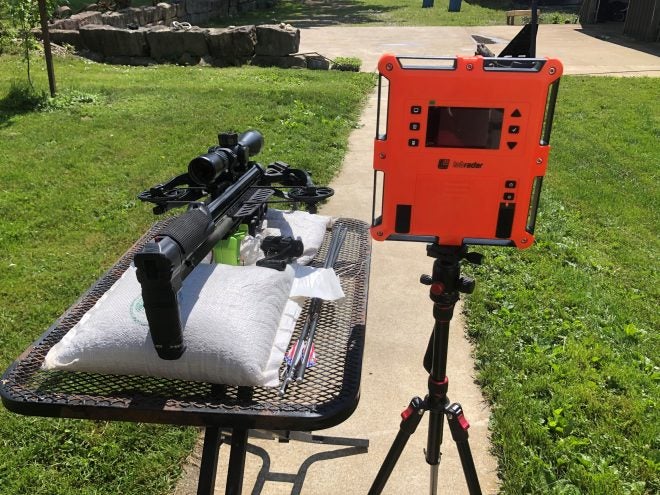
I recently acquired a LabRadar chronograph to fine tune my Killer Instinct X-1 for 3D archery competition. When I first read about the LabRadar chronograph being able to measure velocities at five points out to 100 yards, I knew I had to acquire one.
My goal with the LabRadar was to be able find the arrow setup with the least drag, as well be able to map my trajectory extremely accurately. An unexpected benefit was how rapidly one can adapt to slight changes in my setup without spending hours agonizing about which sight tape I need. The LabRadar App paired with Hawke X-ACT App and the shooterscalculator.com webpage combined perfectly to achieve my goals.
Setting Up the LabRadar Chronograph
I really did not research the LabRadar setup before I purchased it. When it arrived, I gleefully pulled it out of the box, and uncharacteristically started reading the directions. I did not purchase the rechargeable battery pack or archery trigger. The directions for setup are well written and easily followed, I downloaded the LabRadar App on my iPhone, and started harvesting data.
I needed to place the LabRadar unit about 12 inches from my Killer Instinct X-1 for it to pick up arrow flight. There is a page in setup process where you pick how far from the weapon you are placing the unit. I tried 18 inches first, but 12 inches worked much better being that I was using the Doppler trigger versus the plug in archery trigger.
First Time using the LabRadar Chronograph
In my first shooting session, it became apparent that when using the Doppler trigger battery life is fleeting. In the future, I will acquire a rechargeable battery pack and the archery trigger. On the Doppler setting, the LabRadar setup seems to be very sensitive to placement of the unit relative to my crossbow. That being said, I have used the LabRadar unit successfully without the two extra items.
I have probably spent one third of the cost of the rechargeable battery pack on replacement batteries so far. On my very first outing with the LabRadar Chronograph, the weather was horrible. I was trying a new set of strings and cables for the KI X-1, and I was working with the string builder trying to determine how much to let out the axle-to-axle to detune the bow to IBO speeds.
There was a light rain and gusty winds. My old chronograph had large plastic sunshields that acted as wings with minimal wind, also it also did not work in sub-optimal lighting. The LabRadar unit was sitting beside my bench on a tripod and the poor weather conditions did not effect it. I was elated!
Utilizing the LabRadar App
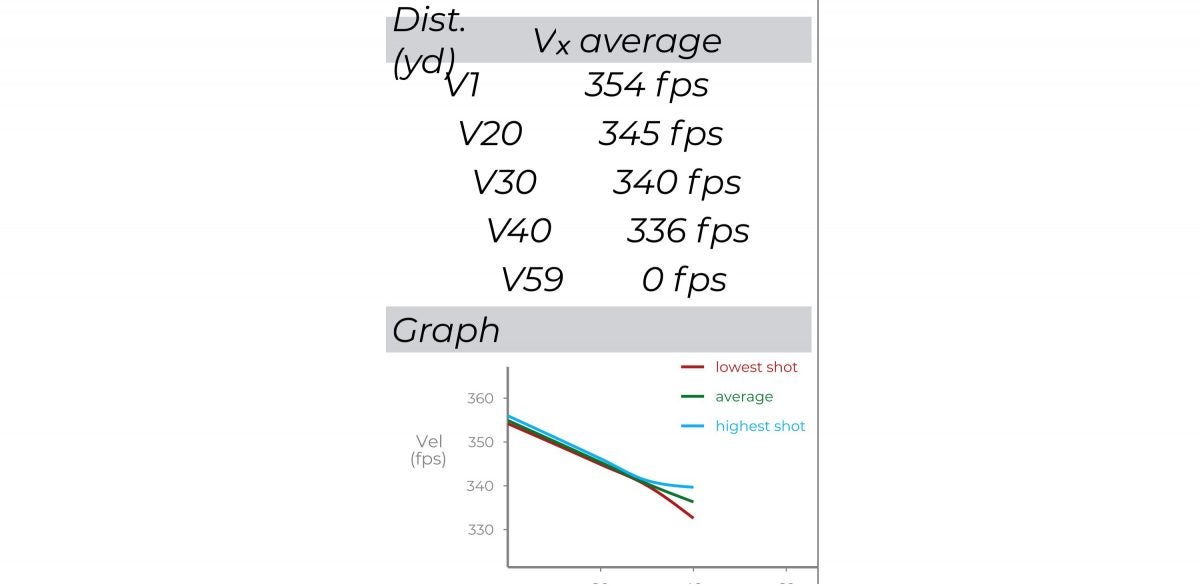
Once the Labradar was synced to my iPhone, I could arm and disarm the unit with my phone. After shots were fired and data generated, you can view it in shot series that are created. I then used the Hawke X-ACT App to calculate my ballistic coefficient in the tools section. Using the velocities recorded by the LabRadar unit, I calculated the B.C. with the velocity decay function.
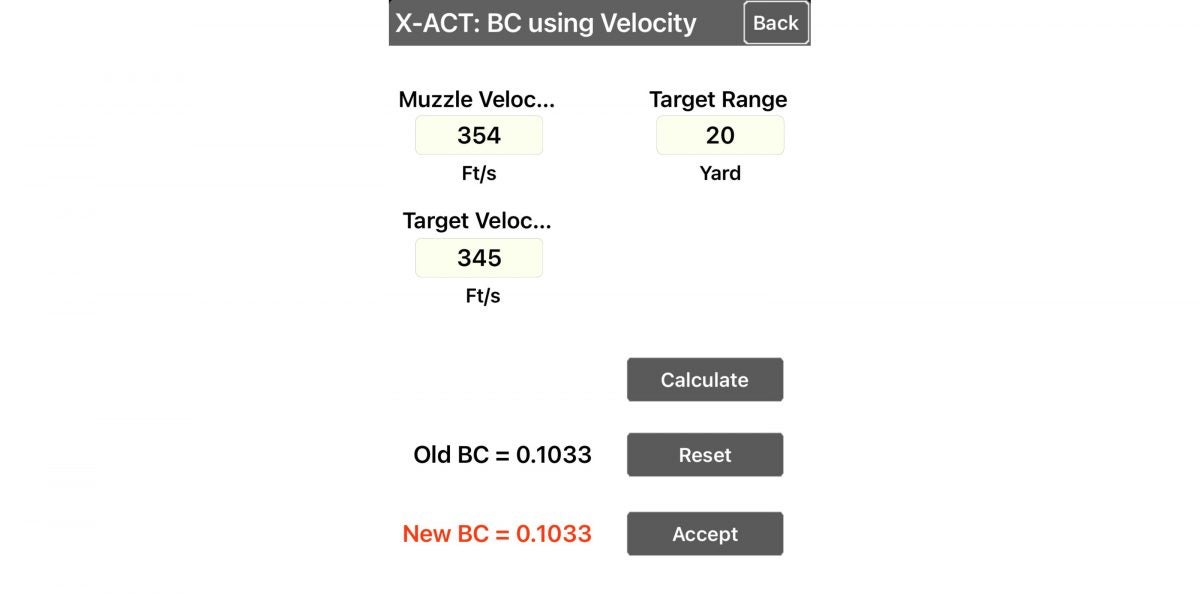
Next, shooterscalculator.com was utilized to generate the trajectory table to provide the click values to dial for specific yardages.
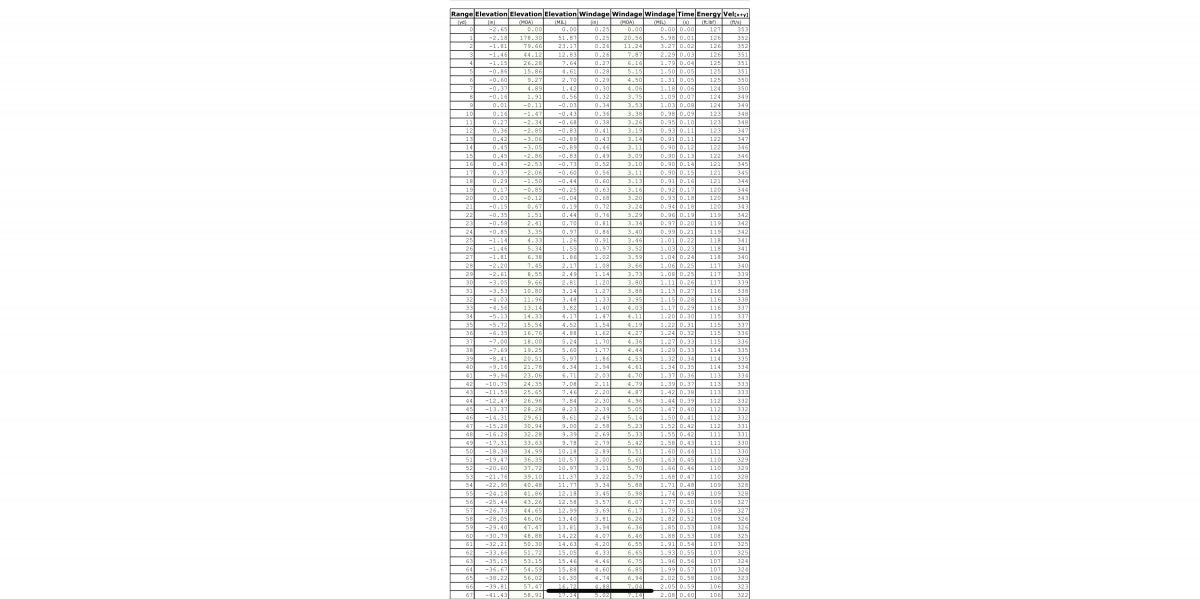
Did it work?
After all the number crunching, did the exercise generate usable data? Absolutely, YES! I recently switched to a Vortex Razor HD LHT 3-15x42mm scope for my competition bows. The Vortex Razor HD has a 30mm tube with 80 M.O.A. (Minute of Angle) of elevation. My Killer Instinct X-1 has an optics rail with M.O.A. built in to get the scope relatively close to the bottom of adjustment.
These attributes combined together have given me the ability to be able to dial my optic out to 65 yards without using an HHA Optimizer or Ravin Jackplate. I really like having the optic mounted solidly to the bow without need for a mechanism to add more elevation in between the two.
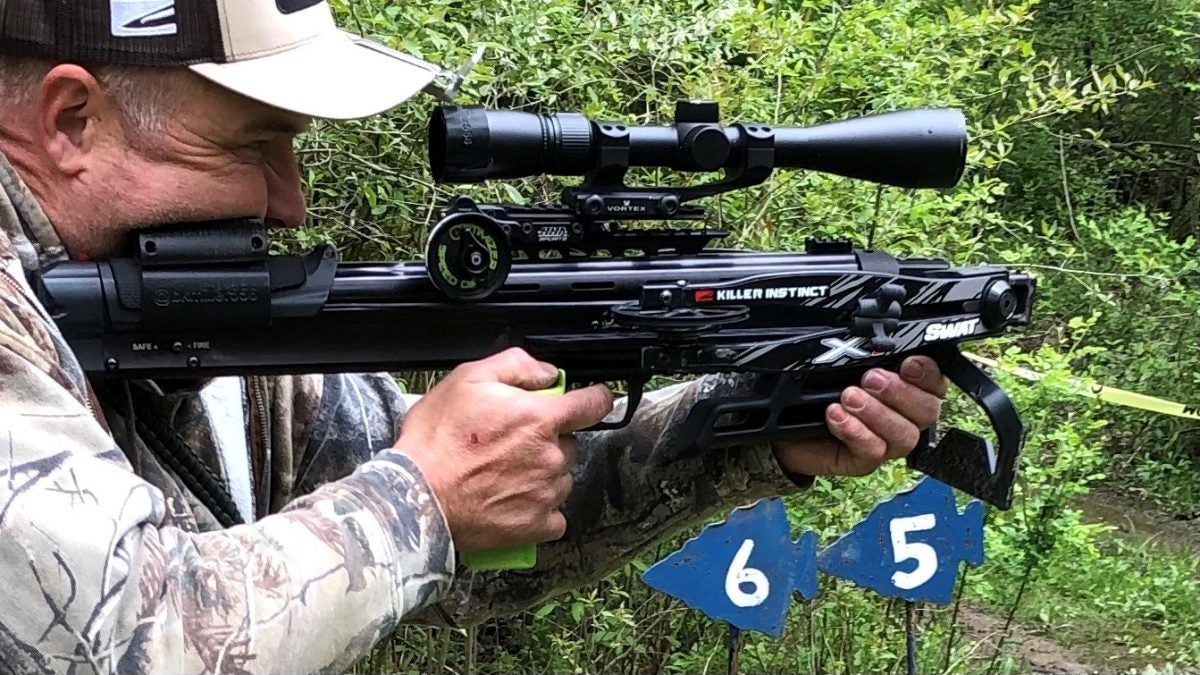
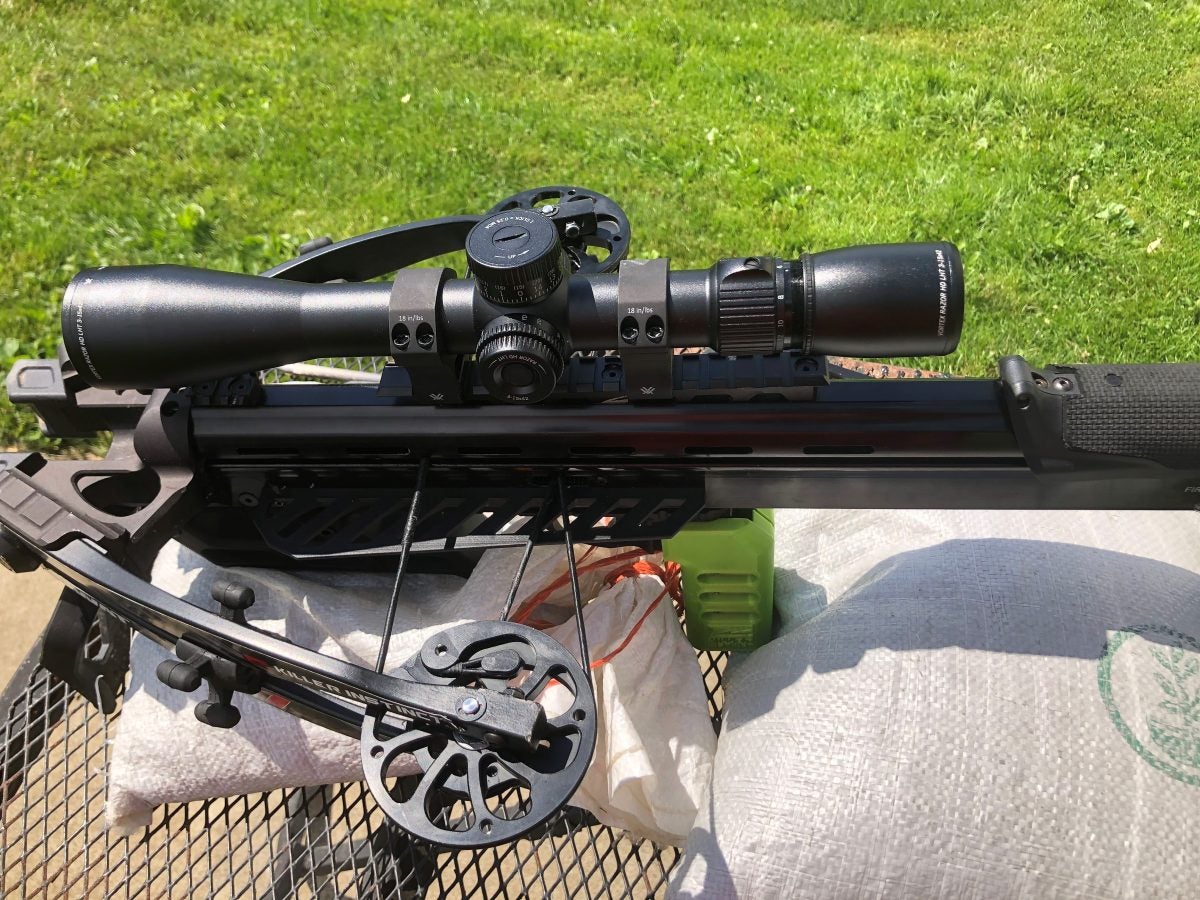
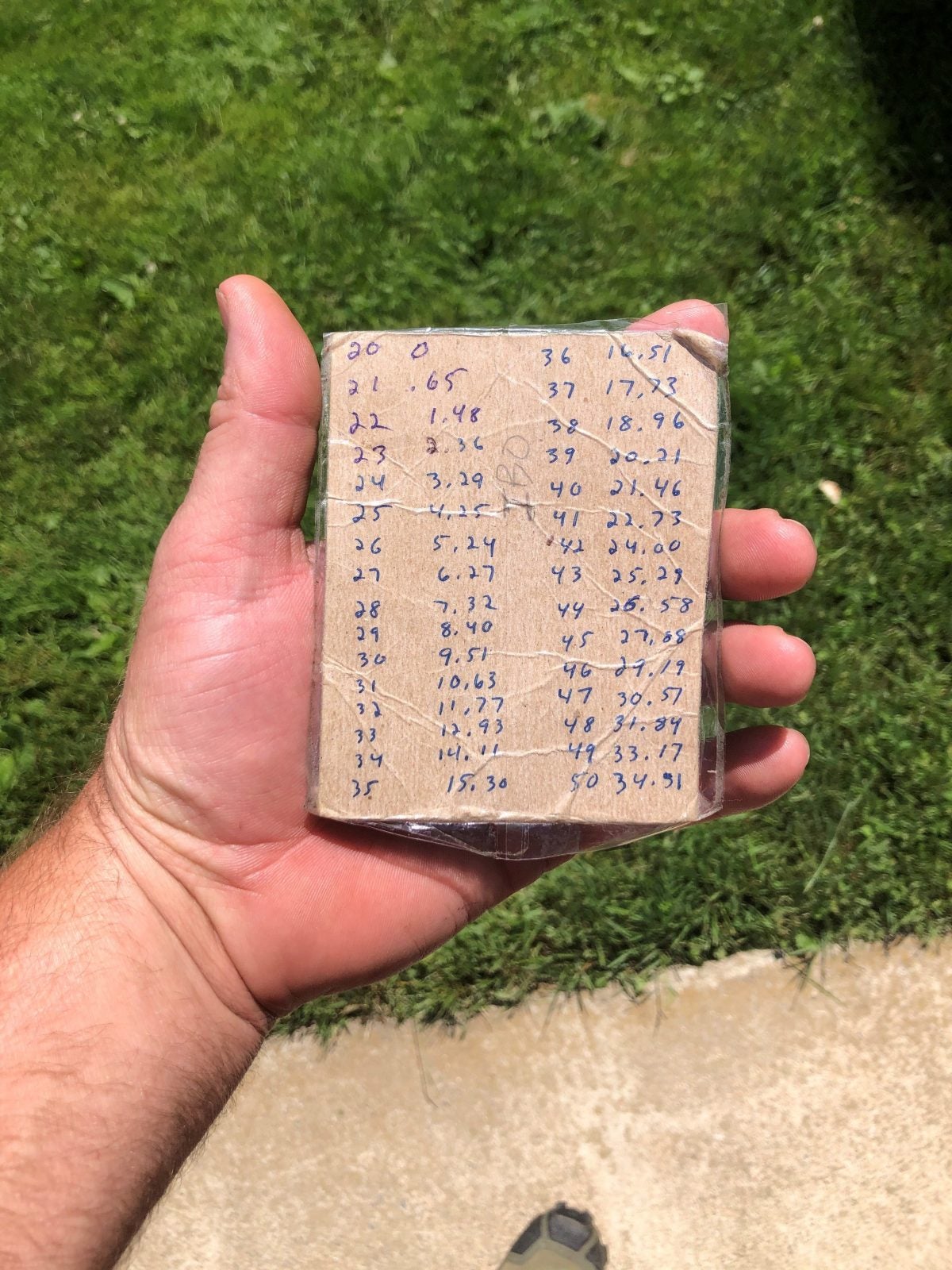
I used the Vortex Razor without the Optimizer in five matches so far. I am getting used to dialing with the scope. It is not as quick or easy as using the Optimizer, but I like the ruggedness and less moving parts. I use the side focus as a reference to keep track where I am at in terms of MOA off zero. If I loose track, I can always go back to zero and start dialing up to what I need to hit the target.
Hunting Setup
When archery season rolls around, I am reasonably sure I will use the same setup. I plugged all my data into the Strelock Pro App on my iPhone and generated holds for my reticle. I try to keep all archery shots under 50 yards.
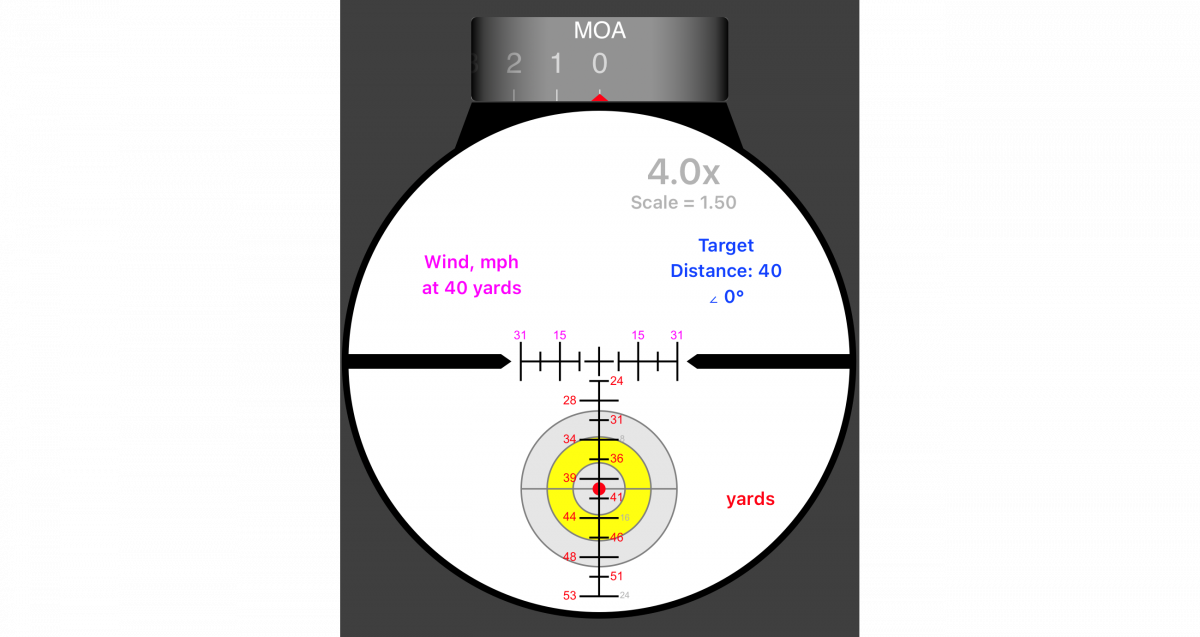
The technology that is available today is a wonderful thing. If I make any changes to my setup that would effect arrow flight, I can easily calculate with the steps outlined above without needing to test for hours. I hope I can keep LabRadar in my shooting toolbox for years to come.